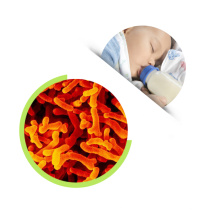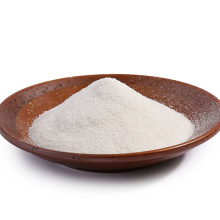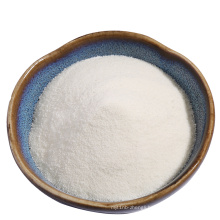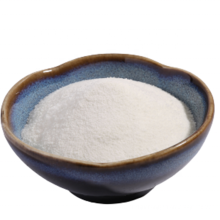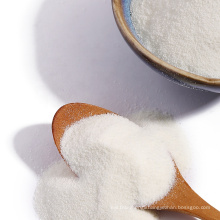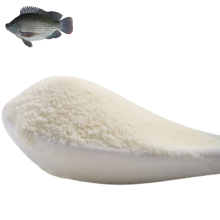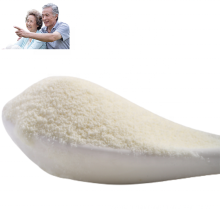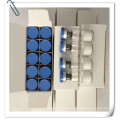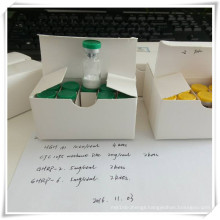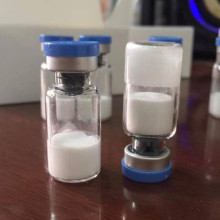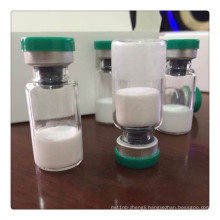Pharmaceutical Peptide Top Quality Ig-1 Lr3
Basic Info
Model No.: API
Product Description
Model NO.: API Customized: Customized Suitable for: Adult Purity: >98% Mf: C400h625n111o115s9 Appearance: White Powder Type: Pharmaceutical Intermediates Shelf Life: 2 Years Transport Package: Box Origin: Shanghai Powder: Yes Certification: GMP, HSE, ISO 9001, USP State: Solid CAS No: 946870-92-4 Other Names: Ig Place of Origin: Shang Hai China (Mainland) The Purity: Over 98% Shipping Method: FedEx, DHL, EMS or by Air Specification: 1mg/vial Pharmaceutical Peptide serine protease inhibitor
Quick Details
Description
IG LR3, also known as Long-Arginine-3 is an analogue of human that has been modified to include a 13 Amino Acid N-terminus extension and the substitution of Arginine for Glutamic Acid at position 3. As a result of these modifications, IG LR3 is approximately three times more potent than IF-1 and possesses an increased half-life due to lowered affinity for binding to the Insulin-Like-Binding Proteins (BPs). IF-1 LR3 retains the ability to bind agonistically to the receptor with improved metabolic stability, relative to I -1. The supplementation of mammalian cell cultures with Long R3 IF-1 at a much lower concentration results in more highly elevated productivity than with standard concentrations of insulin and/or standard I-1. IG1 LR3 is more able to stimulate the type 1 IF receptor and thus induce a higher level of activation of intracellular signaling, which is responsible for promoting cell proliferation and the inhibition of apoptosis.
Specification
Name: IG LR3
CAS No.: 946870-92-4
Molecular Formula: C400H625N111O115S9
Molecular Mass: 9117.5 Da (g/mol)
Amino Acid Sequence: MFPAMPLSSLFVNGPRTLCGAELVDALQFVCGDRGFYFNKPTGYGSSSRRAPQTGIV DECCFRSCDLRRLEMYCAPLKPAKSA
Purity
IG-1 LR3 has a peptide purity level that exceeds 95.0% as determined by HPLC and MS.
Usage
The polypeptide Long R3 (IG1 LR3) is an 83 amino acid analog of IG-I actually comprising the complete IG-1 sequence but with the substitution of an Arginine (Arg) for the Glutamic Acid (Glu) at position 3, as well as a 13 amino acid extension peptide. This sequence change causes IG-1 LR3 to avoid binding to proteins and allow it to have a much longer half life, around 20-30 hours. This analog of IG-1 has been produced with the purpose of increasing the biological activity of the IG peptide." . Among the effects the most positive are increased amino acid transport to cells, increased glucose transport, increased protein synthesis, and decreased protein degradation. When IGis active it behaves differently in different types of tissues. In muscle cells proteins and associated cell components are stimulated. Protein synthesis is increased along with amino acid absorption. As a source of energy, IG-1 LR3 mobilizes fat for use as energy in adipose tissue. In lean tissue, IF-1 LR3 prevents from transporting glucose across cell membranes. As a result the cells have to switch to burning off fat as a source of energy.
IG-1 LR3 builds new muscle tissue by promoting nitrogen retention and protein synthesis. This causes the growth of muscles through both hyperplasia (which is an increase in number of muscle cells) and mitogenesis (which is the actual growth of new muscle fibers). Thus IG-1 LR3 not only makes muscle fibers bigger, it makes more of them as well. Therefore, IG can actually change the genetic capabilities in terms of muscle tissue and cell count. IG increases and differentiates the number and types of cells present.
IF-1 LR3 is a synthetic analog of the naturally existing which is a 93 amino acid residue. Modifications of the natural form occurred with the substitution of the Arg with Glu at the position 3, giving a code R3, and also an extension of a 13 amino acid at the B-terminus. Just like IG-1, R3 has been shown to induce the development and of cells.
The studies on transgenic and knockout mice have shown that it can control its development and growth. It plays an important role as regulator in the G1 to S phase of the cell cycle. When applied to cardiomyocyte cultures, R3 have shown a large increase in proliferating cell nuclear antigen expression and in several cyclins involved in cell progression as well as in bromodeoxyuridien (BrdU) labeling (Kajstura et al. 1994). Other effects it has on cell lines are increased cell survival, inhibition of the apoptotic pathways, culture longevity and increased recombination of protein production (Fang et al. 1997). In another study, the application of the LR3 has led to an increase in the myocyte bromodeoxyuridine uptake by three to fivefold. But it has also shown that LR3 actions have been blocked by the ERK and P13K labeling which completely abolished the BrdU uptake. Furthermore, ut has been shown that in mycocytes, R3 stimulates the cardiomyocyte division in vivo (Sundgren et al. 2003). It has also been suggested that -Long 3R is more potent than the IG-1 because of its low binding capacity with all known binding proteins (Tomas et al. 1995). In another investigation, feeding of LR3-1 in different amounts to investigate the effects on somatotropic axis (plasma levels of and 2, BPs) was done. They have reported that plasma Long-R3 increased when administered subcutaneously but with no such behavior when administered orally. Furthermore, LR3 lowered the levels of native IG-1 in rbGH-injected in calves, but L-R3 increased the amounts of IG-II concentrations when administered with L-R3 subcutaneously. The parenteral administration of the Long R3 IG-1 decreased the concentration but did not affect the secretory system. It was also reported that the somatotrophic acis is basically functioning in neonatal calves and can be influenced by nutrition, growth hormone and Long-R3-). (Hammon and Blum 1997). Contact us if you need more details on Peptides. We are ready to answer your questions on packaging, logistics, certification or any other aspects about Pharmaceutical Intermediate、High Purity. If these products fail to match your need, please contact us and we would like to provide relevant information.
Quick Details
| CAS No.: | 946870-92-4 | Other Names: | MF: | C400H625N111O115S9 | |
| EINECS No.: | N/A | Place of Origin: | shanghai China (Mainland) | Type: | Immune Function Agents, Vitamins, Amino Acids and Coenzymes |
| Grade Standard: | Medicine Grade | Usage: | Animal Pharmaceuticals | ||
| Purity: | 98%min, 99% | Product Name: | |||
| Molecular Formula: | C400H625N111O115S9 | Appearance: | White powder | Dry: | Freeze |
| Assay: | HPLC 99% | Package`: | 0.1 mg/vial | Other Name: |
Description
IG LR3, also known as Long-Arginine-3 is an analogue of human that has been modified to include a 13 Amino Acid N-terminus extension and the substitution of Arginine for Glutamic Acid at position 3. As a result of these modifications, IG LR3 is approximately three times more potent than IF-1 and possesses an increased half-life due to lowered affinity for binding to the Insulin-Like-Binding Proteins (BPs). IF-1 LR3 retains the ability to bind agonistically to the receptor with improved metabolic stability, relative to I -1. The supplementation of mammalian cell cultures with Long R3 IF-1 at a much lower concentration results in more highly elevated productivity than with standard concentrations of insulin and/or standard I-1. IG1 LR3 is more able to stimulate the type 1 IF receptor and thus induce a higher level of activation of intracellular signaling, which is responsible for promoting cell proliferation and the inhibition of apoptosis.
Specification
Name: IG LR3
CAS No.: 946870-92-4
Molecular Formula: C400H625N111O115S9
Molecular Mass: 9117.5 Da (g/mol)
Amino Acid Sequence: MFPAMPLSSLFVNGPRTLCGAELVDALQFVCGDRGFYFNKPTGYGSSSRRAPQTGIV DECCFRSCDLRRLEMYCAPLKPAKSA
Purity
IG-1 LR3 has a peptide purity level that exceeds 95.0% as determined by HPLC and MS.
Usage
The polypeptide Long R3 (IG1 LR3) is an 83 amino acid analog of IG-I actually comprising the complete IG-1 sequence but with the substitution of an Arginine (Arg) for the Glutamic Acid (Glu) at position 3, as well as a 13 amino acid extension peptide. This sequence change causes IG-1 LR3 to avoid binding to proteins and allow it to have a much longer half life, around 20-30 hours. This analog of IG-1 has been produced with the purpose of increasing the biological activity of the IG peptide." . Among the effects the most positive are increased amino acid transport to cells, increased glucose transport, increased protein synthesis, and decreased protein degradation. When IGis active it behaves differently in different types of tissues. In muscle cells proteins and associated cell components are stimulated. Protein synthesis is increased along with amino acid absorption. As a source of energy, IG-1 LR3 mobilizes fat for use as energy in adipose tissue. In lean tissue, IF-1 LR3 prevents from transporting glucose across cell membranes. As a result the cells have to switch to burning off fat as a source of energy.
IG-1 LR3 builds new muscle tissue by promoting nitrogen retention and protein synthesis. This causes the growth of muscles through both hyperplasia (which is an increase in number of muscle cells) and mitogenesis (which is the actual growth of new muscle fibers). Thus IG-1 LR3 not only makes muscle fibers bigger, it makes more of them as well. Therefore, IG can actually change the genetic capabilities in terms of muscle tissue and cell count. IG increases and differentiates the number and types of cells present.
IF-1 LR3 is a synthetic analog of the naturally existing which is a 93 amino acid residue. Modifications of the natural form occurred with the substitution of the Arg with Glu at the position 3, giving a code R3, and also an extension of a 13 amino acid at the B-terminus. Just like IG-1, R3 has been shown to induce the development and of cells.
The studies on transgenic and knockout mice have shown that it can control its development and growth. It plays an important role as regulator in the G1 to S phase of the cell cycle. When applied to cardiomyocyte cultures, R3 have shown a large increase in proliferating cell nuclear antigen expression and in several cyclins involved in cell progression as well as in bromodeoxyuridien (BrdU) labeling (Kajstura et al. 1994). Other effects it has on cell lines are increased cell survival, inhibition of the apoptotic pathways, culture longevity and increased recombination of protein production (Fang et al. 1997). In another study, the application of the LR3 has led to an increase in the myocyte bromodeoxyuridine uptake by three to fivefold. But it has also shown that LR3 actions have been blocked by the ERK and P13K labeling which completely abolished the BrdU uptake. Furthermore, ut has been shown that in mycocytes, R3 stimulates the cardiomyocyte division in vivo (Sundgren et al. 2003). It has also been suggested that -Long 3R is more potent than the IG-1 because of its low binding capacity with all known binding proteins (Tomas et al. 1995). In another investigation, feeding of LR3-1 in different amounts to investigate the effects on somatotropic axis (plasma levels of and 2, BPs) was done. They have reported that plasma Long-R3 increased when administered subcutaneously but with no such behavior when administered orally. Furthermore, LR3 lowered the levels of native IG-1 in rbGH-injected in calves, but L-R3 increased the amounts of IG-II concentrations when administered with L-R3 subcutaneously. The parenteral administration of the Long R3 IG-1 decreased the concentration but did not affect the secretory system. It was also reported that the somatotrophic acis is basically functioning in neonatal calves and can be influenced by nutrition, growth hormone and Long-R3-). (Hammon and Blum 1997). Contact us if you need more details on Peptides. We are ready to answer your questions on packaging, logistics, certification or any other aspects about Pharmaceutical Intermediate、High Purity. If these products fail to match your need, please contact us and we would like to provide relevant information.
Product Categories : Pharmaceutical Peptides
Other Products
Hot Products
Pharmaceutical Peptides Over 98% CAS 77591-33-4 2mg/Vial Thymosin Beta 4 /Tb500Lab Supply GMP Certified Bcp-157 CAS: 137525-51-0 at Hot SaleRaw Powder Deslorelin Acetate for Adult with GMP ApprovedGood Resouce Lanreotide with Raw Powder2016 Hot Sale Factory Price Fast Delivery Pharmaceutical Peptide Melanotan 2 CAS 121062-08-6Selank Lab Supply High Purity 98% Peptides Selank for Research with GMPHigh Quality PT-141 32780-32-8 Peptide for Sexual DysfunctionHigh Purity Carperitide 89213-87-6 with Best PriceGonadorelin Acetate 99%Purity Peptide, Gonadorelin PriceHigh Purity Gh 176-191 for Muscle Growth with GMP (10iu/vial)(Dispel freckle and whiten skin) Peptide Tetrapeptide-30 with GMP CAS 56-81-5Peptide Supply Peptide Product Ghrp6, Top Grade Ghrp6 - Buy Peptide Hormone, CAS 87616-84-0Hot Sale Cjc-1295 for Bodybuilding with GMP SGS (with DAS)Pharmaceutical Intermediate Peptides for Loss Weight 1mg/Vial Igf-1lr3 / MgfResearch Chemical Peptide Ghrp-2 Supplier From ChinaPharmaceutical Peptide Build Muscle/Loss Weight 5mg/Vial Ghrp-2 with Lab Supply

